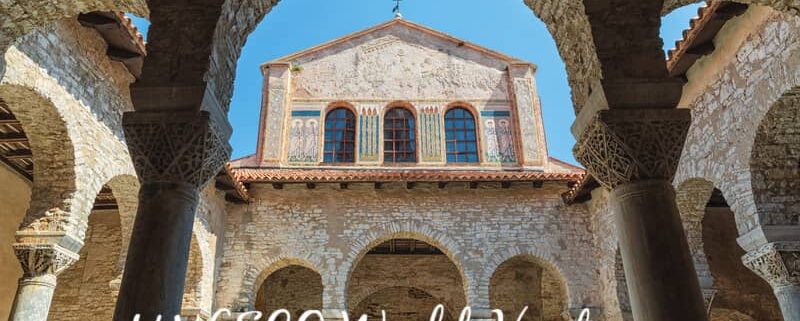
The UNESCO World Heritage Site list – which aims to protect sites around the world that are deemed to be of natural or cultural importance – features famous sites from across the world. It comes as no surprise to find out that places such as The Great Wall in China; the Acropolis in Athens; Machu Picchu in Peru; the Taj Mahal in India; the Palace of Versailles in France; Australia’s Great Barrier Reef; Iguazu National Park in Argentina; Stonehenge in the UK and the Grand Canyon in the U.S. are all on the World Heritage Site List. But you perhaps may be surprised to find out that there are ten World Heritage Sites in Croatia – eight cultural sites and two natural. Read on below to find out what these sites are and where they are located.
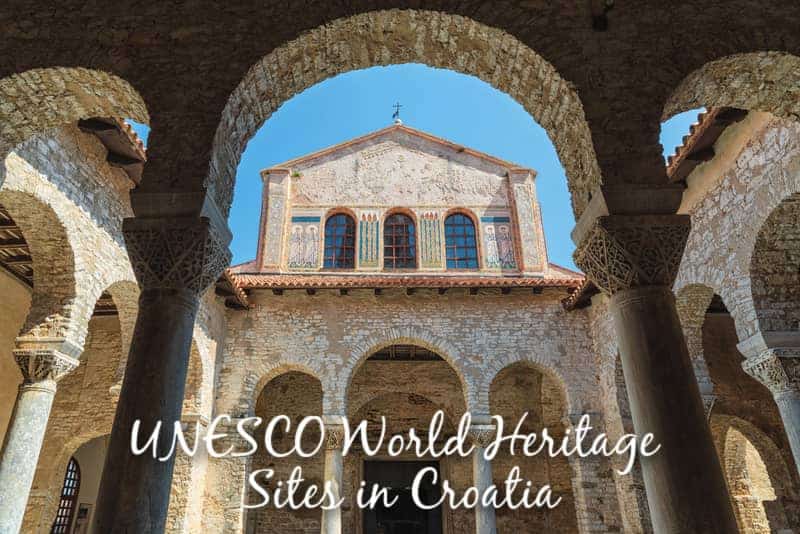
You can read more about the mission of UNESCO World Heritage on their website.
History of World Heritage Sites in Croatia
The first three sites in Croatia to be added to the World Heritage List were the Plitvice Lakes National Park, Dubrovnik Old Town and the Historical Complex of Split. These three sites were added to the UNESCO list in 1979.
Episcopal Complex of the Euphrasian Basilica in the Historic Centre of Porec
This complex in the Istrian town of Porec is one of the finest examples of a Christian structure in the world. First constructed in the 4th century, the cathedral site was refurbished and added to in the 5th and 6th centuries on the order of Bishop Euphrasius, after whom the complex is named. This stunning and wonderfully preserved building is the top sight in Porec. As well as the basilica, the complex comprises of a baptistry, a bishopric, and an atrium; there is also a bell tower built in the 16th century and a chapel from the 17th century. It is the mosaics in the basilica that are perhaps of the most importance – from the 6th century, the various mosaics depict Christ, Mary and Child, the Annunciation and others.
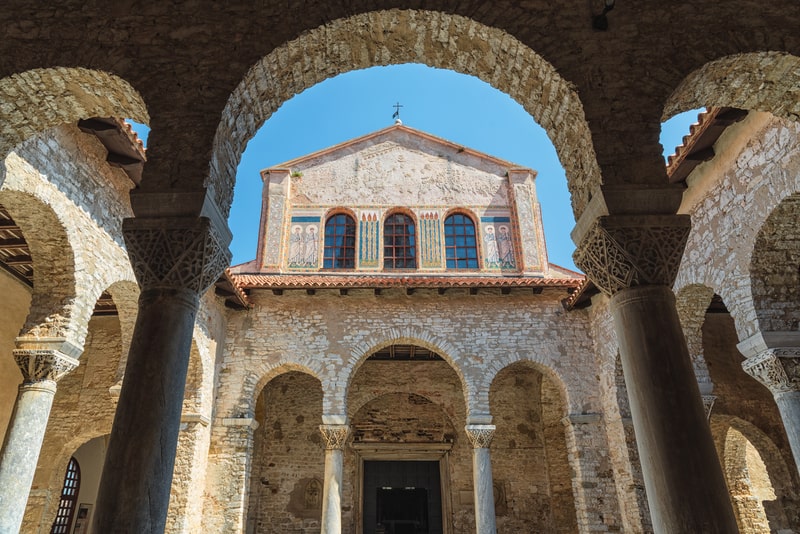
The Episcopal Complex was added to the UNESCO World Heritage List in 1997.
More info: You can read more information about the Basilica and what there is to see there on the Porec Tourist Office website
Historic City of Trogir
As anyone who’s ever visited or stayed in Trogir knows, this place is pretty special indeed. Situated on a small island close to the mainland (and connected by a bridge), its pretty little streets, many churches, Kamerlengo Fortress, town walls, Cathedral and more impressive sights are a delight to explore. It is the centre of Trogir – which showcases a very well-preserved Venetian architecture – that is on the UNESCO List. (Trogir was under the rule of Vence from 1420.)
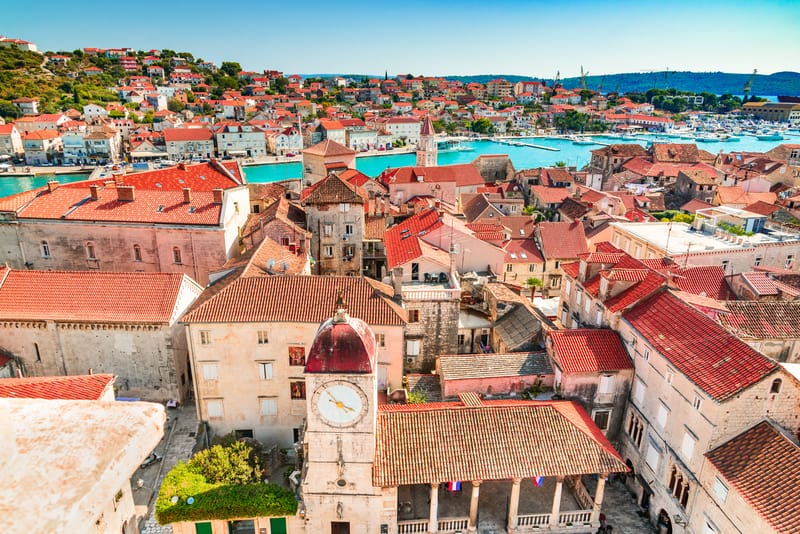
Trogir was added to the UNESCO World Heritage List in 1997.
Historical Complex of Split with the Palace of Diocletian
The Diocletian’s Palace area of Split truly needs to be seen to be believed. Not only is the actual palace fantastically well preserved in parts, but there are also sections that have developed over the many centuries as the city has evolved and now the Palace sits side by side with ordinary city life – apartments, shops, cafes and more. The main part of the Palace was constructed in the 3rd and 4th centuries, intended as a ‘retirement home’ for Roman Emperor Diocletian. By the 6th century, the site fell into disrepair and from the 7th century, inhabitants of the abandoned nearby site of Salona (present-day Solin) sought sanctuary behind the Palace’s high walls.

Many of Split’s most famous sights are located in and around the Palace complex – from the Cathedral of St Domnius (originally a mausoleum for Emperor Diocletian) to the belltower; the Peristyle with its impressive columns to People’s Square. The statue of Gregory of Nin (originally constructed in 1929) is sited just outside the Golden Gate of the Palace. Meanwhile, the Riva and all of its cafes is adjacent to the sea, next to the Palace.
Stroll through the Palace complex to see sights both old and new, and revel in Split life.
One of the first three UNESCO World Heritage sites in Croatia, this was declared a site in 1979.
Old City of Dubrovnik
Which you may instead refer to as Dubrovnik‘s Old Town! It’s absolutely no surprise to find this on the UNESCO list; the wonderfully preserved Old Town walls encircling a little ‘town’ (although obviously, Dubrovnik is much larger than just this part) of pretty buildings with terracotta roofs, cobblestone streets and a number of Dubrovnik’s other famous landmarks.
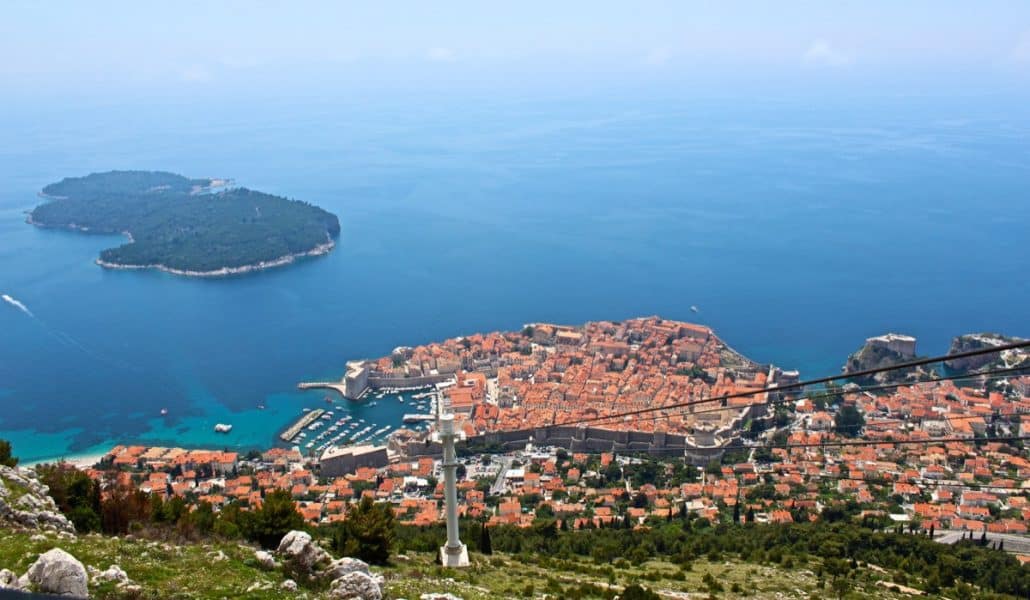
As with the site in Split, this was also one of the first three UNESCO World Heritage sites in Croatia, declared as such in 1979.
Stari Grad Plain
On the island of Hvar, this large agricultural area is located east of the town of Stari Grad towards the centre of the island. Established by the Greeks over 2,400 years ago – in the 4th century B.C., no less – who had colonised Hvar at that time, the land has been in use for agriculture since that time and still is today. The Plain consists of rectangular plots that have been divided by stone walls that have been carefully maintained over the centuries; the original construction also included a rainwater collection system through the use of gutters and cisterns. Vines and olives have always traditionally been grown here, although the plots were also used for grain in the middle ages; fig and almond trees are also common.
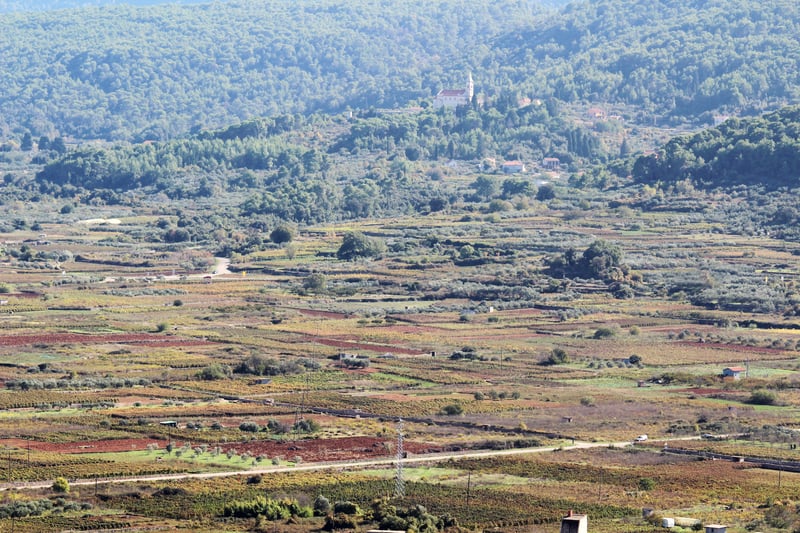
Stari Grad Plain was added to the UNESCO World Heritage List in 2008.
More info: Further information on Stari Grad Plain can be found on the Stari Grad Tourist Office website.
Stecci Medieval Tombstone Graveyards
These limestone tombstones are primarily found in graveyards in Bosnia & Hercegovina, although are also located in the border regions of Croatia, Serbia and Montenegro. For comparison – just over 4,000 are in Croatia, with 60,000 found in Bosnia. First appearing in the 12th century, they reached their peak use in the 14th and 15th centuries. It is unknown what ethnic or religious affiliation they are attached to, seemingly a common tradition amongst Catholic and Orthodox religions alike. The tombstones have the appearance of large vertical or horizontal stones with a flat top, sometimes with a pedestal. They are often inscribed and some have symbols carved into them – most common, decorative motifs of deer appear to have been used.
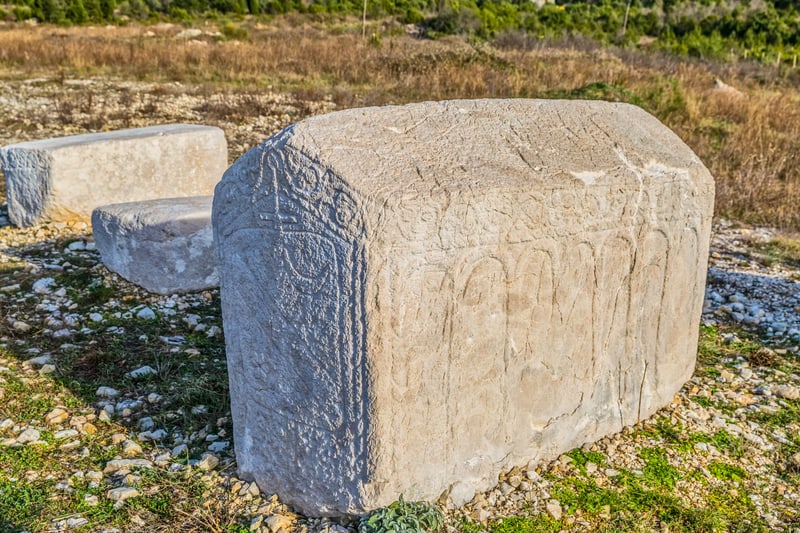
The tombstones on the UNESCO World Heritage List – added in 2016 – comprise around 4,000 located at 28 sites.
The Cathedral of St James in Sibenik
Built from limestone and marble from the island of Brac, construction of the Cathedral of St James (Katedrala sv. Jakova in Croatian) in Sibenik first commenced in 1431 and fully completed over 100 years later in 1536. Its construction was overseen by a number of Italian and Croatian architects, particularly Francesco di Giacomo, Juraj Dalmatinac and Niccolo di Giovanni Fiorentino. Largely Rennaisance in style, its main features are its dome (32m in height) and three apses. A true symbol of the town of Sibenik, the Cathedral was unfortunately damaged by shelling in the Homeland War but quickly restored to its former glory.
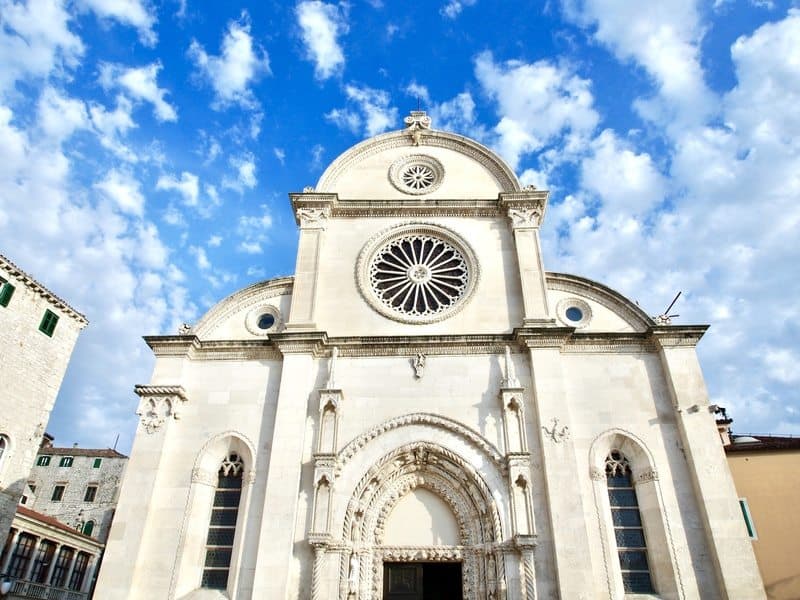
The Cathedral was added to the UNESCO World Heritage List in 2000.
More info: Read more on the Cathedral on the Sibenik Tourist Office website.
Venetian Works of Defence between the 16th and 17th Centuries: Stato da Terra – Western Stato da Mar
The ‘Venetian Works of Defence’ comprise defensive walls located at six different sites – in Bergamo, Peschiera del Garda and Palmanova in Italy; in Kotor in Montenegro; and in Zadar and Sibenik in Croatia.
Those in Zadar are the walls surrounding parts of the Old Town. In particular, these can perhaps best be seen by the Land Gate.
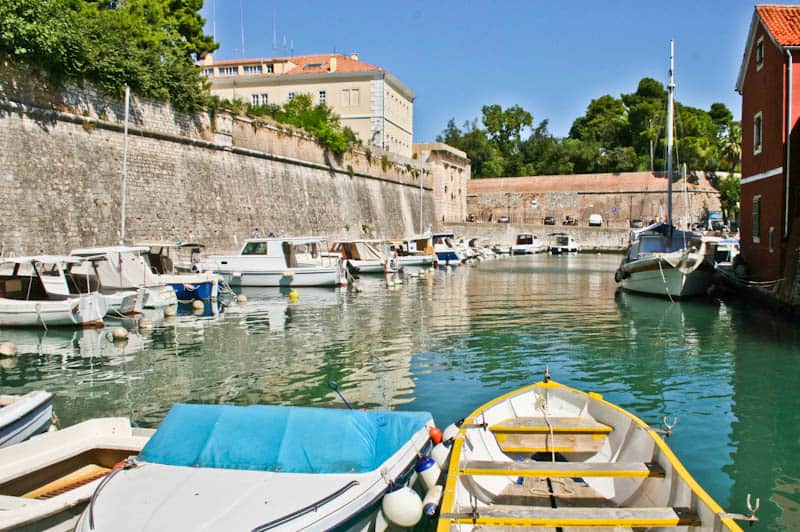
In Sibenik, it is the Fort of St Nicholas (Trdjava sv. Nikole) which is located on a small island at the entrance of St Anthony’s Channel which leads to the town of Sibenik; the fortress was constructed to protect the town’s port. Built in the 16th century, from brick and stone, the fortress was once armed with 32 cannons. Today, it is possible to visit this impressive structure on an organised boat trip.
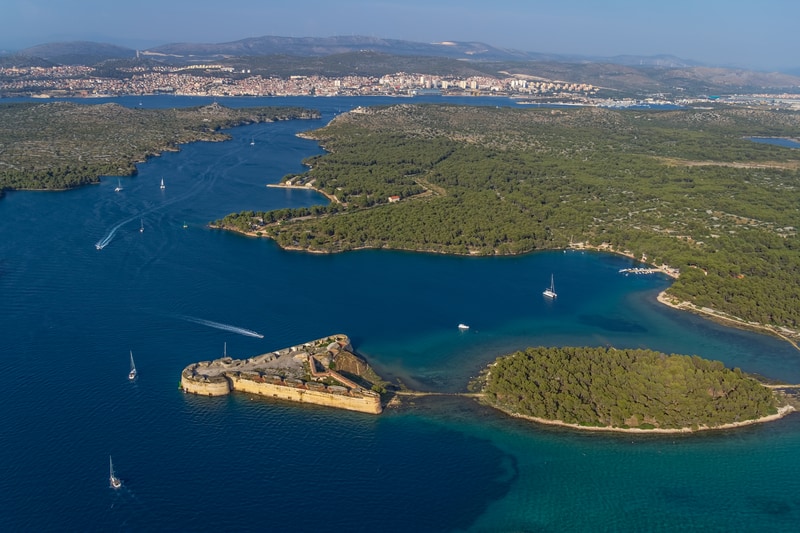
These were added to the UNESCO World Heritage List 2017.
More info:
- Zadar’s Defensive Walls from Zadar Tourist Office
- Fort of St Nicholas from Sibenik Tourist Office
The Plitvice Lakes National Park
It comes as no surprise to see the gorgeous Plitvice Lakes National Park on the World Heritage list. They are one of two natural sites (the other being the forests mentioned below) compared to the eight cultural sites listed above. This series of lakes and waterfalls set in lush forests are beyond magical to explore via the many paths and routes in the Park.
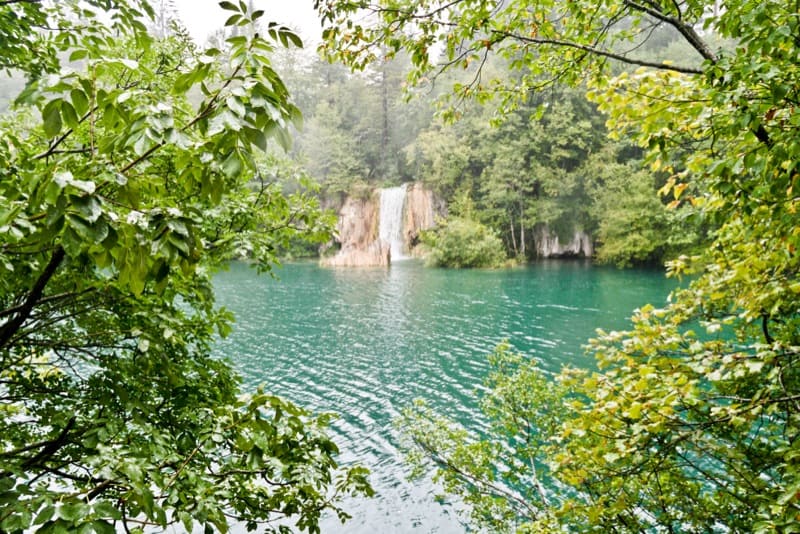
The Plitvice Lakes were one of the first three Croatian sites added to the UNESCO List, in 1979.
Ancient and Primeval Beech Forests of the Carpathians and Other Regions of Europe
These forests stretch out over 12 European countries from as far apart as Ukraine to Albania, Spain to Slovakia. In Croatia, it is the forests found in the Paklenica and North Velebit National Parks that are included on the UNESCO List.
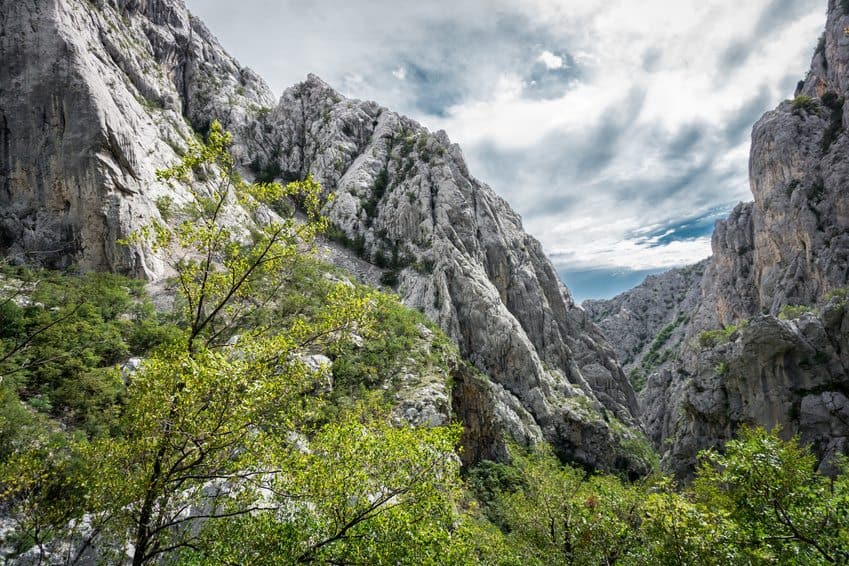
The forests were first added to the UNESCO World Heritage List in 2007, and extended in 2011 and 2017.
More information on World Heritage Sites in Croatia
Read more about the UNESCO World Heritage Sites in Croatia on the UNESCO website.
